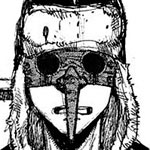Conditions and Damage
Jan 14, 2024 10:25:52 GMT -8
Post by Jae on Jan 14, 2024 10:25:52 GMT -8
◀ Character DamageDamage dealt is structured using a tier system that illustrate damage in terms of severity. Below are examples that illustrate how characters could (or should) react to being wounded.
Do keep in mind that NRP follows the T1 ruleset, meaning damage dealt is determined by the person on the receiving end of the attack (unless they are overruled by a staff member).{Damage Tiers}Minor: Blisters, welts, scratches, and cuts. Superficial wounds and burns. These are noticeable and painful but not problematic.
D-rank techniques generally fall in this category.
Moderate: Open wounds, deep cuts/punctures, second degree burns, and fractured bones. These are painful injuries that can be tolerated, but should be addressed. Medical attention is recommended.
C-rank techniques generally fall in this category.
Serious: Broken bones, flayed muscle, third degree burns. Medical attention is required.
B-rank techniques generally fall in this category.
Severe: Dismemberment. Organ damage. Fourth degree burns. Extreme pain, almost incapacitating. These are life threatening injuries where the victim's survival is uncertain.
A-rank techniques generally fall in this category.
Critical: Life threatening. Survival uncertain. S-rank techniques generally fall in this category.
Damage is cumulative on NRP meaning it stacks, regardless of the tier and where the injury occurred. Two injuries of the same tier are treated like one injury of the next highest tier.
For example, two Minor injuries would have the same net effect as one Moderate injury. Receiving two more low tier injuries (which equals another Mid), would upgrade their injuries to High tier. The formula is:1 Critical = 2 Severe = 4 Serious = 8 Moderate = 16 Minor
1 Severe = 2 Serious = 4 Moderate = 8 Minor
1 Serious = 2 Moderate = 4 Minor
1 Moderate = 2 Minor
This means that if a character were to sustain 16 Minor injuries, they would reach their damage threshold and be incapacitated. 4 Serious wounds would have the same effect. So on and so forth.
It also means that a character with 1 Moderate injury can act in "Good Condition" from a narrative perspective. Receiving 1 Serious injury's worth of damage shifts them to "Fair Condition". Et cetera.
This system allows players and staff to hold each other accountable by actively monitoring players' damage threshold in combat.
And should it ever come into question, all characters (no matter their rank) have a baseline damage threshold of 1 Critical (excluding any modifiers).












